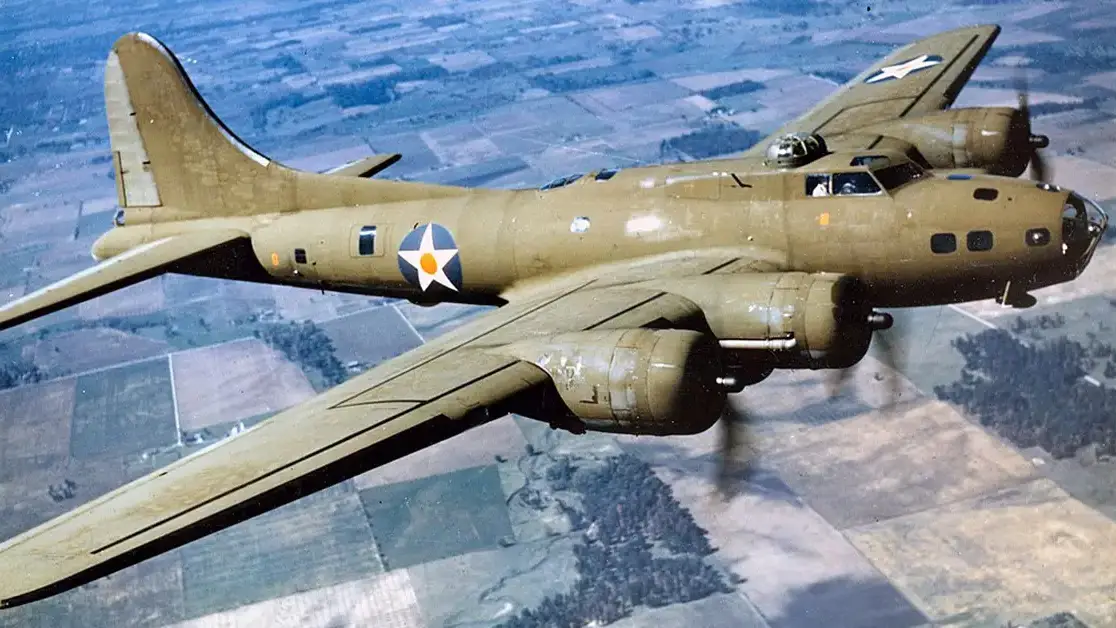This clever advertising doomed thousands of aviators

SUMMARY
In the lead up to World War II, the U.S. Army Air Force had to make tough decisions on how to spend limited defense dollars. Decades of strict budgets after World War I left capabilities across the military underdeveloped, and the Air Forces decided to spend their part of the pie focusing on strategic bombing.
And, unfortunately, when a manufacturer told them a new bomber wouldn't need a fighter escort, they bought it. Thousands of aviators would pay the price as unescorted B-17 formations faced losses of over 20 percent.
When the Army Air Force was looking for a new bomber in the early 1930s, they floated the idea of getting a beastly four-engine bird. Most bombers had two engines at the time, but it was thought a larger, four-engine plane could carry more bombs a longer way.
Boeing proved this was true with their Model 299. It had four engines and could carry 8,000 pounds of bombs while flying at faster speeds than other bombers of the day. It carried 13 large machine guns, mostly .50-cals. A reporter for The Seattle Times dubbed it a "flying fortress" in a photo caption and Boeing ran with it.
The future looked good for the Model 299 as it dominated a fly-off competition in 1935. But then it crashed and so was disqualified. Worse, it turned out that that the Model 299 was way more expensive than its primary competitors, and so the Army chief of staff ordered a two-engine bomber instead.
But the Army's top aviators still wanted the Model 299, and they managed to order 13 for testing and dubbed them YB-17s. The plane was popular with aviation officers and its great range led to some public successes in the pre-war years. The Army Air Force already had a body of doctrine supporting the use of heavy, long-range bombers, but they refined it around their new flying fortresses.
And the new doctrine did treat the planes like they were fortresses, even though the fortress moniker originated with a journalist and was adopted by salesmen. As navigator Bob Culp recalled in 2008, "When you realize you're protected by a very thin skin of aluminum, you realize you're not really in a fortress."
Boeing had advertised that the bomber could fly bombing missions in daylight conditions and defend itself from enemy fighters thanks to all those machine guns. Which, if true, would've been a godsend, because there were no fighters who could match the range of the bomber. And so then-Col. Curtis E. LeMay drafted a formation for the bomber that maximized the ability of the planes to protect each other.
Basically, 9-12 planes would fly in a box so their guns would cover all angles of attack. Three or more of these boxes would fly together. There was a lead box, then a box that flew higher, and finally a trail box that flew low.
With 36 planes formed into three boxes, there were 468 machine guns present. They would have 324,000 rounds of ammunition between them. The spread of a single .50-cal. machine gun would fire rounds across a spread 600 yards wide when firing at planes 1,000 yards away. With 468 planes firing 600-yard-wide spreads, it was thought they could form an actual wall of deadly steel at oncoming fighters.
And so the doctrine was approved, and aviation officers fooled themselves that B-17s really could defend themselves.
But then American B-17s made their European combat debut in 1942. The planes flying over Europe in daytime proved easy pickings.
Flak gunners didn't give the first crap about all those machine guns on the planes. Worse, B-17 pilots couldn't maintain the precise boxes necessary for 360-degree coverage, and gunners couldn't always keep the proper fields of fire.
Crews could head home, their duty fulfilled, after 25 missions. Only 1 in 4 would survive to reach that milestone. On one of America's first large bomber raids in 1942, less than 300 bombers set off for Nazi-occupied Europe and 60 of them were lost, an attrition of over 20 percent.
Even when new fighters joined the war, the problem persisted anytime the B-17s outflew their escorts. In October 1943 the Eighth Air Force flew Mission Number 115 against factories in Schweinfurt, Germany. The 291-plane formation survived well while British Supermarine Spitfires and then P-47 Thunderbolts escorted them to the border. But then they were alone against German fighters.
Sixty planes were shot down and only 229 successfully dropped their bombs on target. Only 197 made it back to England.
The fact was, the B-17 Flying Fortress was anything but a fortress, and it needed fighters escorts like any other bomber.
SHARE
